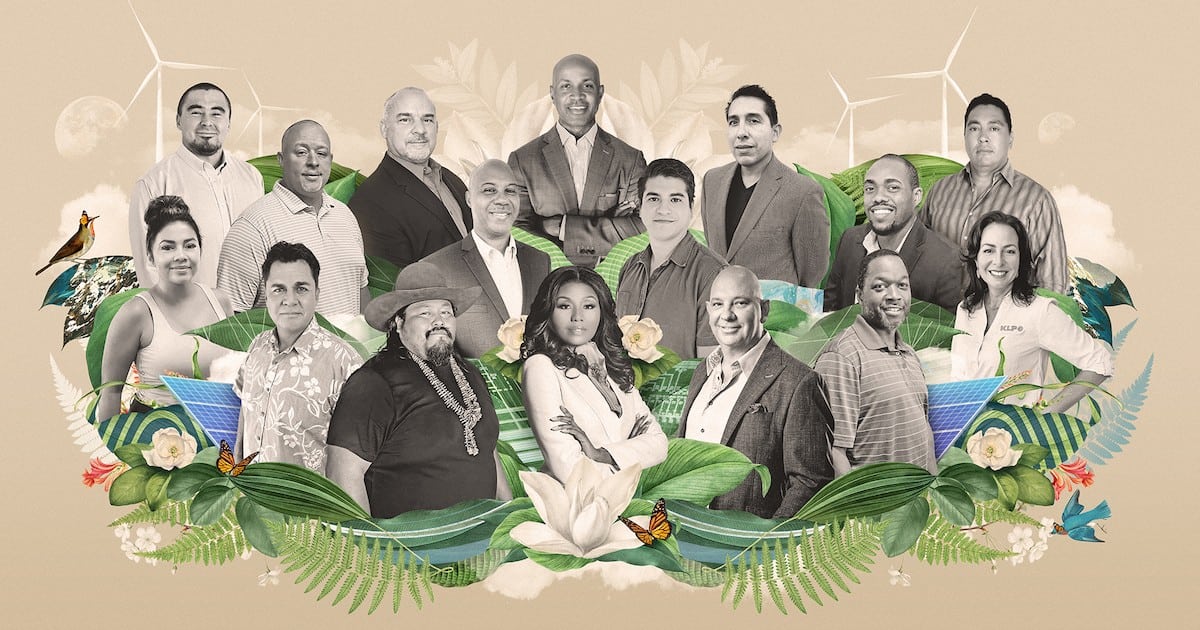In an effort to expand environmental business solutions, Apple has announced the companies involved with the second Impact Accelerator class.
environment
Apple Celebrates 40 Years in Australia with New Environment Initiatives and More
Apple celebrated its 40 years in Australia by announcing new environment and educational initiatives and support for Indigenous communities.
Apple and Other Tech Companies Are Buying Gold Illegally Mined in Brazil
Apple and other tech companies are allegedly buying gold illegally mined from Brazilian indigenous lands in the Amazon rainforest.
iFixit's Pro Tech Toolkit and Mako Driver Kit are now Carbon Neutral
On Wednesday, iFixit announced that its Pro Tech Toolkit and Mako Driver Kit are now registered carbon neutral products.
North Vancouver Plans to Use Electricity From Bitcoin Mining for Heat
The city of North Vancouver in Canada is planning to use electricity created by Bitcoin mining to heat houses.
The technique will involve using MintGreen’s Digital Boilers, which recover more than 96 per cent of the electricity used for bitcoin mining to heat commercial and residential buildings.
Operating at full capacity 365 days a year, the bitcoin miner will be able to heat 100 residential and commercial buildings in the city, situated in the hills north of Vancouver.
Apple Should Scrap Leather if Its Serious About The Environment
Apple is always keen to tout its environmental credentials. However, Adam Oram at iMore makes a really good point. If the company wanted to really improve the impact it has on the environment further, it would stop using leather.
One aspect of Apple’s product lineup no one appears to be looking at, though, is the use of leather. Environmentally, leather is extremely damaging, and it’s surprising to me that Apple has not pursued more eco-friendly alternatives. Apple has a long history with leather, having made a variety of accessories. Right now, in Apple’s product lineup, it has several leather items, including iPhone cases, folios, and sleeves, Apple Watch bands, iPad Smart Covers, MacBook sleeves, MagSafe wallets, and AirTag key rings. These are all supplementary to its hero products, but they are often sold as add-ons when picking up a new phone or tablet.
Apple Celebrates Earth Day 2021 With Curated Content for Customers
In celebration of Earth Day 2021 today, Apple announced some new education resources, curated content, and activities for users.
Smartphone Case Maker ‘Incipio’ Partners With Eden Reforestation Projects
Incipio is partnering with Eden Reforestation Projects for Earth Month 2021. For every purchase of an Organicore smartphone case, five trees will be planted.
What Apple's Doing With All That Green – TMO Daily Observations 2021-03-17
Bryan Chaffin and Charlotte Henry join host Kelly Guimont to discuss how Apple is spending money including Maps features and more “green” updates.
Apple's Environmental Moves – TMO Daily Observations 2020-10-20
Today, Charlotte Henry and Andrew Orr join host Kelly Guimont to discuss Apple’s latest changes to help achieve their environmental goals.
Send Fax From Your iPhone With EcoFax
EcoFax is an app that lets you send fax from your iPhone. At the end of the month, the company plants trees to compensate for all the paper used to deliver those faxes. They partnered with Trees for the Future Foundation and aim to increase the number of trees they plant as more people use the app. I checked the privacy policy, and it can access and collect data like: your identity, location data, camera, contacts, storage, photos and/or media, notifications, and mobile data. Camera, contacts, storage, and photos make sense, because that’s how the app functions. If that doesn’t bother you and you need to send faxes, maybe consider EcoFax. App Store: Free (Offers In-App Purchases)
Unreliable Entities, Sustainability Reports – TMO Daily Observations 2020-05-18
Andrew Orr and Charlotte Henry join Kelly Guimont to discuss Apple’s inclusion on China’s “naughty” list and corporate responsibility.
Apple 2020 Supplier Responsibility Report Includes Info on COVID-19 Impact
Apple released its 2020 Supplier Responsibility report today. It includes a letter from Sabih Khan, Apple’s Senior Vice President of Operations.
What Impact Does Watching Netflix Have Climate Change?
Despite what mainstream media wants you to think, the outcome is mostly still unclear when it comes to Netflix binging.
On one hand, the paper reports, strides in data center efficiency have mostly kept pace with growing demand for data, meaning that in the last decade the total amount of energy consumed by the centers has not changed much—around 1% of global energy use. That’s about the same as 18 million US homes.
On the other hand, it’s clear that we’re approaching a limit to squeezing out more efficiency—especially given the rise of data-ravenous artificial intelligence.
What I find annoying about the debates around climate change is how a lot of mainstream media are trying to blame people. Like blaming their Netflix binging instead of reporting the facts like 100 corporations are responsible for 71% of emissions. Sure, Netflix wouldn’t exist without its users, but I think it’s important to focus on how much more damage a corporation does than an individual.
Apple and Others Sign Letter to Support Paris Agreement
Apple, Google, Microsoft, Adobe, and more tech companies have signed a United For The Paris Agreement letter that calls on the U.S. to stay in the international climate change pact.
They argued that the international pact would “strengthen [US] competitiveness” by helping it lead the way in technologies that will usher in an eco-friendly future. It also sets “clear goals” that help with planning and spur innovation, the companies said.
The letter isn’t a binding commitment, and it’s unlikely to persuade a White House that has both ignored and tried to censor climate science. Nonetheless, it makes clear where numerous companies stand…
In the meantime we can educate people to accept scientific facts and not treat climate change as a hoax or political issue.
This Real-Time Map Shows You the Amazon Forest Fires
Ever since Jair Bolsonaro proclaimed that economic growth was more important than protecting the Amazon, there have been 74,155 fires. For the past three weeks, a giant fire has been blazing its way through the forest, and an interactive map lets you watch it.
Many of the fires are set by farmers to clear land. In early August, farmers in the Amazon self-declared a “fire day” to burn trees, emboldened by the fact that the government isn’t enforcing rainforest protections that are part of national law.
“It’s very rare to have fires starting naturally in the Amazon,” says Weisse. “And so almost everything that we’re seeing is a result of human activity, and it’s mostly happening along roads or in farms or where people are.”
We Need a New Internet That Can Withstand Climate Change
The internet infrastructure is vulnerable to climate change. The fiber optic cables that ferry data can handle some water damage, but they weren’t meant to be permanently underwater.
…within the next 15 years, in a scenario that projects about a foot of sea level rise by then, 4,067 miles of fiber conduit cables are likely to be permanently underwater. In New York, Los Angeles, and Seattle, the rising seas could drown roughly 20 percent of all metro fiber conduit. These are the lines that physically ferry our Internet traffic from place to place.
Another 1,101 “nodes”—the buildings or places where cables rise out of the ground, which often house computer servers, routers, and network switches to move our data around—are also expected to be swamped.
Salmon Gold, Gift Card Shenanigans – TMO Daily Observations 2019-08-13
Andrew Orr and Charlotte Henry join host Kelly Guimont to talk about RESOLVE and Salmon Gold, and when gift cards go wrong.
Fight Climate Change, Get a Free Nomad Lightning Cable
Get a free Nomad Lightning cable when you donate to the company’s Carbon Fund fundraising event. The minimum donation is US$5, which the company will use to plant trees. This is a steal because the cable on offer is normally US$24.95.
Every dollar donated plants a tree in Acre, a region of Brazil, that is being devastated by deforestation. We want to try to reverse this. Every ten trees planted captures around one ton of C02. Learn more about the project.
What if Plants Could Be Smart Home Devices?
What if plants could be smart home devices? That’s the idea of Harpreet Sareen and Pattie Maes in their cyborg botany research.
These experiments led the researchers to possible future applications that include sending notifications—the plant might jiggle to alert you when your package is delivered, for instance—or as a motion sensor, which could help you keep track of your pet or be applied to security systems.
Cool idea. When most people talk about “invisible interfaces” they usually mean things like smart clothing or using your voice like with a HomePod. Now if only trees transmitted Wi-Fi…
Pl@ntNet is a Social Network for Plant Lovers
First created in 2009, Pl@ntNet is a social network for plant lovers, as well as a plant identification app.
Once a user makes an identification (or marks the plant as unknown), they submit their photos to the Pl@ntNet community. Thousands of professional botanists and flora-philes scan the stream of new observations to verify a species, or suggest a new one. If a person confirms your observation, a little green “crowd” icon appears. Your score rises as more people validate your labels, although a few users are certified to train the algorithm without community validation.
I haven’t used this yet but I’ll definitely check it out. I also love iNaturalist. It’s not really a social network, but it can identify both plants and animals.
Apple Conserves a Forest in Colombia
Apple partnered with Conservation International to protect and restore a 27,000-acre mangrove forest in Cispatá Bay.
Which One is Better for the Environment: Physical or Digital Music?
A study published yesterday found that streaming digital music led to “unintended” environmental and economic impacts. Despite a reduction in the use of plastics in physical music media, storing and transmitting digital music led to an increase in greenhouse gas emissions (GHGs).
Researchers discovered that the amount of GHGs generated by the streaming and downloading of music online is actually much larger than the amount that was once generated by the production of plastic used to make vinyl records, cassettes and CDs in earlier decades.
The study seems focused on plastic use in physical media vs. storing and streaming digital music from servers. I’d like to see more data, such as how much electricity is used when billions of people play the average CD vs. a digital song.
Use iNaturalist to Identify Flora and Fauna
I’ve used iNaturalist for a couple years and think it’s a great tool. Two features that help the app stand out from competitors are 1: The machine learning it uses. Once you take a picture, it can automatically suggest what species you’re looking at. 2: With every photo you upload and tag with location and other metadata, you’re contributing to real science. iNaturalist shares data with scientific data repositories like the Global Biodiversity Information Facility.
The app is a joint initiative between The California Academy of Sciences and the National Geographic Society and works sort of like a Shazam for Nature in that it lets you snap a shot of something you come across and instantly get an answer for what that planet, animal, or bug might be.




















